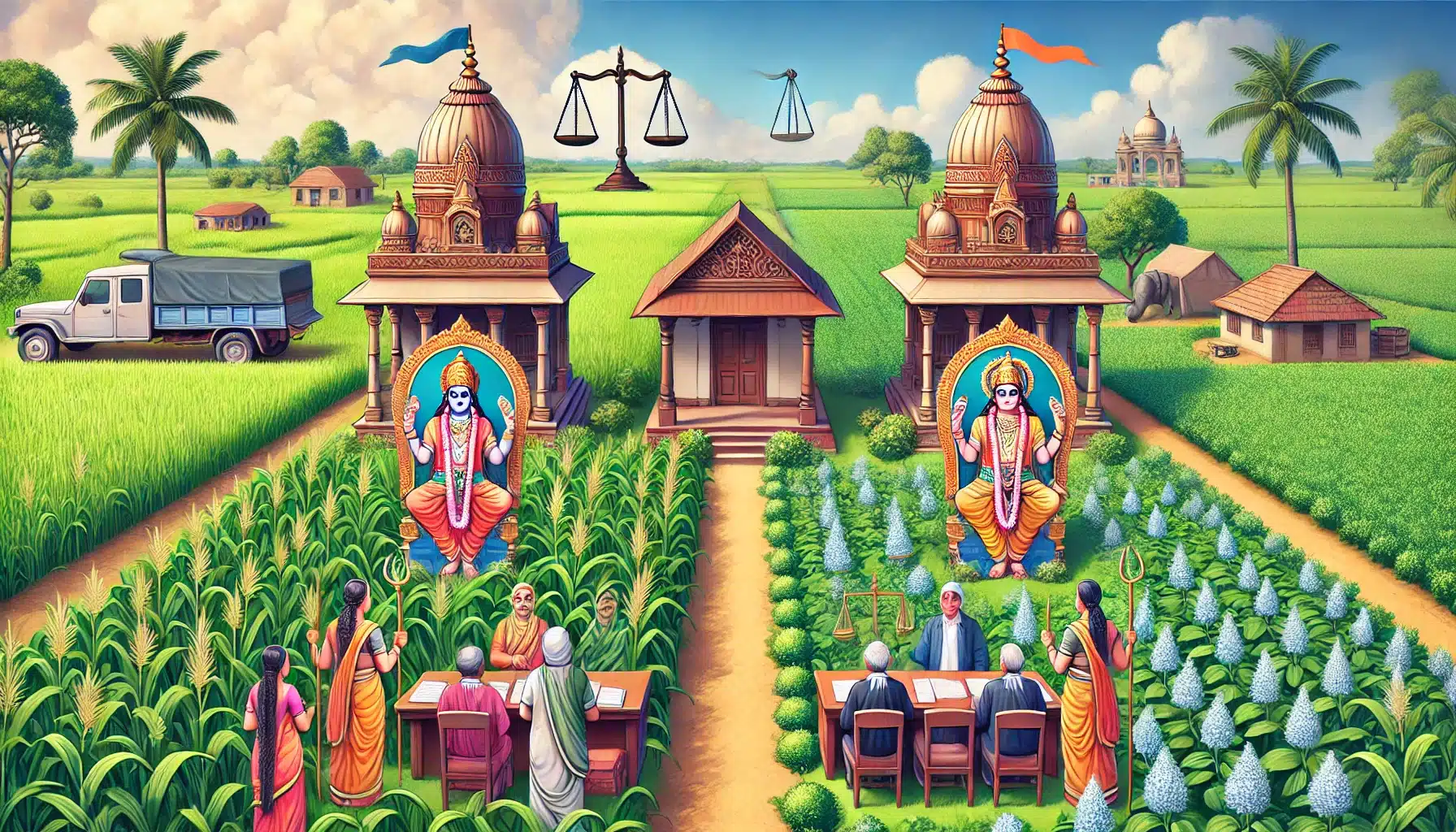In the case Ram Jankijee Deities and Ors. v. State of Bihar and Ors. (AIR 1999 SC 2131), the Supreme Court of India recognized Hindu deities ‘Ram Jankiji’ and ‘Raja Rani’ as separate juristic entities capable of holding property. The Court ruled that each deity is entitled to individual grants and e

Citation: AIR 1999 SC 2131
Date of Judgment: 11th May, 1999
Court: Supreme court of India
Bench: M. Jagannadha Rao (J); Umesh C. Banerjee (J)
Facts
- In December, 1950, Mahanth Sukhram Das executed and duly registered two separate deeds of dedication, in the name of the deities ‘Ram Janki Ji’ and Thakur Raja. Both the deities were separately given the landed property to the extent of 81. 14 acres of land and in fact were put in possession through the shebaits.
- The properties of the deities were also duly registered and enlisted with the Religious Trust Board and the same are under the control and guidance of the Board.
Decision of the Deputy Collector
The Deputy Collector in the matter of fixation of Ceiling Area allowed two units to the Deities, on the ground that there are two temples to whom lands were gifted by means of separate registered deeds of Samarpan namas and declared only 5 acres, as excess land, to be vested on to the State.
Decision of the Collector
The Collector passed an order recording therein that the entitlement of the trust would be one unit only. Since the entire property donated to the two units are being managed by a committee formed under the direction of the Religious Trust Board and prior conferment of the managerial right to only one person and there being no evidence on record to show that the property donated to the deities are to be managed separately, having separate account, question of recommendation for exemption under Section 5 and entitlement of two units would not arise.
Decision of the High Court
The High court allowed the Writ Petition and granted the relief of two units as claimed by the petitioner. Referring to Shri Lakshmi Narain and Others v. State of Bihar and Others[1], the court observed that it is settled by several pronouncements of the Judicial Committee that under the Hindu Law images of the deities are juristic entities with the capacity of receiving gifts and holding property. When the gift is directly to an idol, each idol or deity holds it in its own right to be managed either by separate managers or by a common manager.
Decision of the High Court Division Bench
The Division Bench of the High Court rejected the contention of the petitioner.
Decision of the Supreme Court
Court held that the existence of two idols cannot be denied. ‘Ram Jankiji’ and ‘Raja Rani’ are entitled to individual grant and thus entitlement for two units to be noted in the records of the Government and exemption of 75 acres Taal land only would be made available to the Petitioners and the balance 5 acres of land be made available to the Government.
Key legal issues discussed
1. Does Hindu law recognize Hindu idols as a juridical subject being capable in law of holding property?
Yes
Court observed that Hindu law recognizes Hindu idol as a juridical subject being capable in law of holding property by reason of the Hindu Shastras following the status of a legal person in the same way as that of a natural person.
The Privy Council in the case of Pramatha Nath Mullick v. Pradyumna Kumar Mullick & Anr.[2], held that,
“A Hindu idol is, according to long established authority, founded upon the religious customs of the Hindus, and the recognition thereof by Courts of law, a juristic entity. It has a juridical status with the power of suing and being sued. Its interests are attended to by the person who has the deity in his charge and who is in law its manager with all the powers which would, in such circumstances, on analogy, be given to the manager of the estate of an infant heir.”
2. Whether ‘Ram Jankiji’ and ‘Raja Rani’ can be tended to be Hindu deities and separate juristic entities?
Yes
Court observed that images according to Hindu authorities, are of two kinds: One school propagates God having Sayambhu images or consecrated images; the other school lays down God as omnipotent and omniscient and the people only worship the eternal spirit of the deity and it is only the manifestation or the presence of the deity by reason of the charm of the mantras.
One cardinal principle underlying idol worship ought to be borne in mind is that whichever god the devotee might choose for purposes of worship and whatever image he might set up and consecrate with that object, the image represents the Supreme God and none else.[3]
In Bhupatinath v. Ramlal Maitra[4], Chatterjee (J) also observed that, “A Hindu does not worship the “idol” or the material body made of clay or gold or other substance, as a mere glance at the mantras and E prayers will show. They worship the eternal spirit of the deity or certain attributes of the same.”
God is omnipotent and omniscient and its presence is felt not by reason of a particular form or image but by reason of the presence of the omnipotent: It is formless, it is shapeless and it is for the benefit of the worshippers that there is manifestation in images of the Supreme Being. Hence, the Deity cannot be termed to be in fake form and ‘Ram Jankiji’ and ‘Raja Rani’ are genuine Hindu deities.
Regarding the question of separate juristic entities, the court referred to the judgment of Patna High Court in the case of Shri Lakshmi Narain & Ors. v. State of Bihar & Ors.[5], where all the four deities were treated as separate juristic entities and properties being endowed to them just like any other human being. Court discarded the argument that they being installed in only one temple and there being only one document of endowment in their favour, they could not get more than one unit.
3. Whether the presence of an idol is essential for a temple?
No
Andhra Pradesh High Court in the case of Addangi Nageswara Rao v. Sri Ankamma Devatha Temple[6], referred to definition of “temple” under Andhra Pradesh Charitable and Hindu Religious and Endowments Act, 1966 which defines it as a place by whatever designation known used as a place of public religious worship, and dedicated to, or for the benefit of, or used as of right by the Hindu community or any section thereof, as a place of public religious worship.
In T.R.K. Ramaswami Sarvai and another v. The Board of Commissioner for the Hindu Religious Endowments, Madras[7] also, court held that the presence of an idol, though it is an invariable feature of Hindu temple, is not a legal requisite. Supreme Court also in P.F. Sadavarthy v. Commissioner, H.R. & C.E.[8], held that to constitute a temple it is enough if it is a place of public religious worship and if the people believe in its religious efficacy irrespective of the fact whether there is an idol or a structure or other paraphernalia.
[1] (l978) BBCJ 489.
[2] LR B 52 IA 245.
[3] B.K. Mukherjea, Hindu Law of Religious and Charitable Trusts, 5th Edn.
[4] ILR 37 Calcutta 128.
[5] (1978) BBCJ 489.
[6] (1973) l A.W.R. 379.
[7] ILR (1950) Madras 799.
[8] AIR (1963) SC 510.



